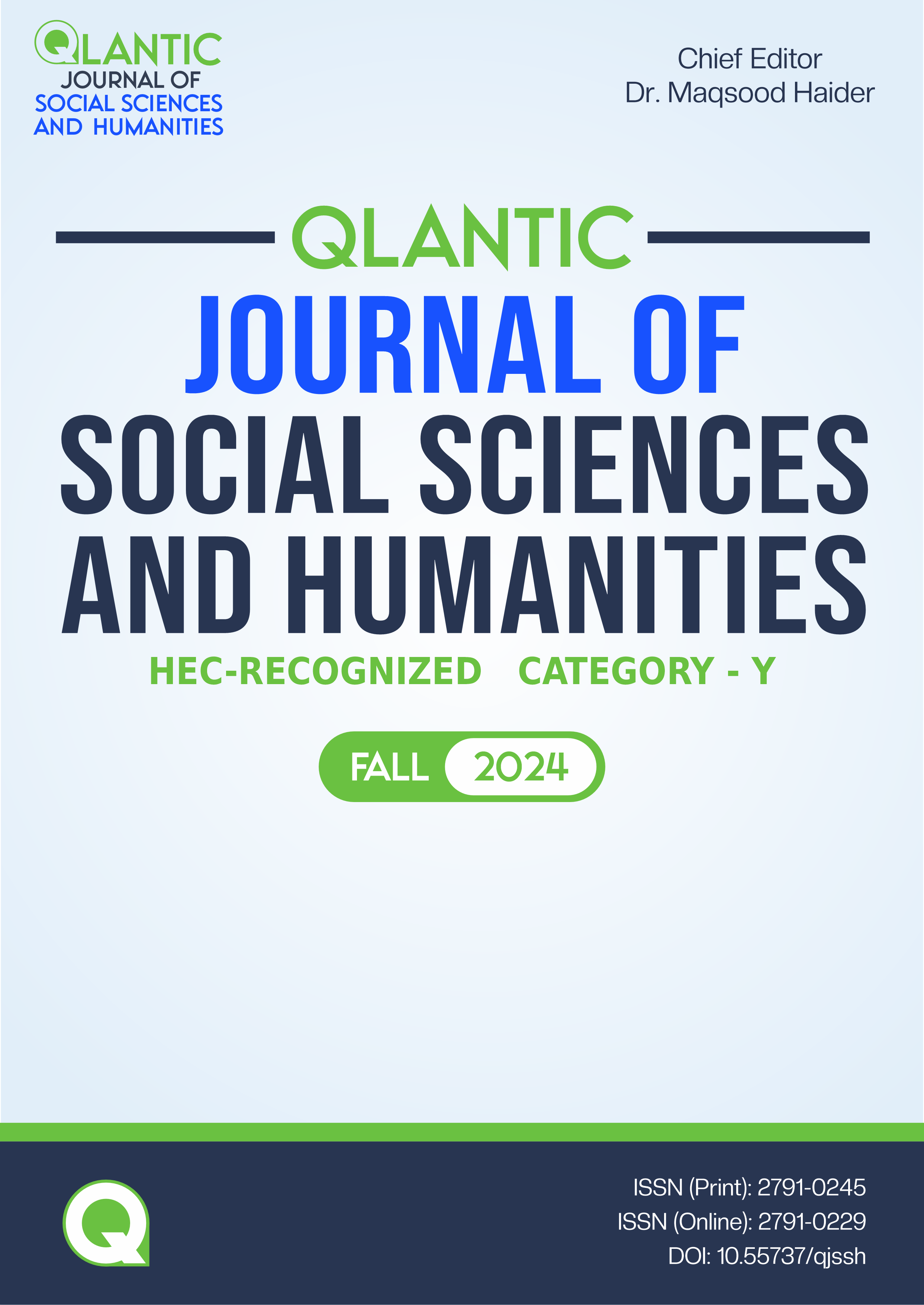The Interplay between Spatial Injustice and City Space in Akhtar’s Melody of a Tear
DOI:
https://doi.org/10.55737/qjssh.v-iv.24275Keywords:
Spatial Injustice, City Space, Capitalism, Globalization, Spatial SegregationAbstract
The present research explores spatial injustice in Akhtar’s Melody of a Tear (2019) by utilizing theoretical underpinnings of Edward William Soja and Henri Lefebvre revolving around city spaces and spatial injustice in the cotemporary capitalistic society. It examines how spatial injustice and inequality are institutionalized in Karachi’ city space and reveals how Karachiites are being segregated and exploited under the duress of encroaching capitalism and globalization. The research argues that space is not just living place; rather, it determines the inhabitants’ destiny and quality of life. Consequently, it is the individual who suffers due to spatial segregation and injustice. Furthermore, this study also exposes institutions and their exploitative role in the implementation of spatial injustice in the characters’ lives. Lastly, this research accentuates the struggles of assorted strata of society that is becoming the victims of spatial injustice while living in contemporary world. Therefore, the current research is of great significance as it explores factors associated with spatial injustice and spatial segregation in modern day living in city spaces. It adds a vital standpoint in the city space studies and contemporary scholarship on capitalistic societies.
References
Akhtar, H. K. (2019). Melody of a tear. India: Niyogi Books.
Chambers, C. (2016). “Lahore Lahore hai: Bapsi Sidhwa and Mohsin Hamid’s city fictions” in Chakraborty, M and Al-wazeedi, U. (eds). Postcolonial urban outcasts: city margins in South Asian Literature. New York: Routledge.
Gottdiener, M. (1993). A Marx for our time: Henri Lefebvre and the production of space. Sociological Theory, 11(1), 129-134. http://doi.org/10.2307/201984
Herzfeld, M. (2006). Spatial Cleansing. Journal of Material Culture, 11(1-2), 127–149. https://doi.org/10.1177/1359183506063016
Lefebvre, H. (1991). The production of space, (Trans.) Nicholson-Smith, D. USA: Blackwell.
Saleem, A. U. (2014). Paracolonialism: A case of post-1988 anglophone fiction. [Doctoral Dissertation]. University of Bedfordshire. http://core.ac.uk/download/pdf/29822381.pdf
Shakeel, Z., & Saleem, A. U. (2017). Reading Lahore as a postmodern space of conflict: A Lefebvrian study of Hamid’s fiction. Journal of Social Sciences, Government College University, Faisalabad, 8(2), 27-44. https://jss.gcuf.edu.pk/index.php/jss/issue/view/13/48
Shamsie, K. (2002). Kartography. London: Bloomsbury Publishing Plc.
Soja, E. W. (2010). Seeking spatial justice. Minneapolis: University of Minnesota Press.
Soja, E. W. (1989). Postmodern geographies: The reassertion of space in critical social theory. United Kingdom: Verso.
Zaidi, S. H. Z., Saleem, A. U., & Waheed, S. (2021). Spatial injustice in Shamsie’s kartography. Journal of Development and Social Sciences, 2(4), 343-352. http://doi.org/10.47205/jdss.2021(2-IV)30
Downloads
Published
Issue
Section
License
Copyright (c) 2024 Usama Shahid, Muhammad Afzal Khan Janjua

This work is licensed under a Creative Commons Attribution-NonCommercial 4.0 International License.





